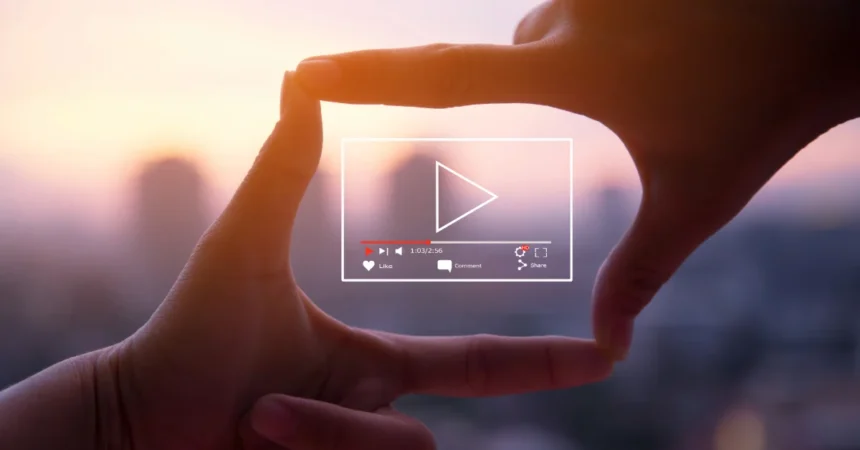Introduction
In our increasingly globalized world, the demand for video content that transcends language barriers is higher than ever. Whether it’s educational content, corporate training videos, or entertainment, reaching a diverse audience requires accurate and efficient video translation. Traditionally, translating video content has been a labor-intensive and costly process. However, the advent of AI video translators is revolutionizing the way video translation is done, making it faster, more accurate, and more accessible. In this article, we explore how AI is transforming video translation and what this means for content creators and audiences alike.
1. The Traditional Challenges of Video Translation
Before delving into how AI is changing the landscape, it’s essential to understand the challenges traditionally associated with video translation. The process typically involves several steps: transcribing the original audio, translating the text into the target language, and then dubbing or subtitling the video. Each of these steps requires human expertise, which can be both time-consuming and expensive.
Human translators are prone to errors, especially when dealing with idiomatic expressions, cultural nuances, or highly technical content. Additionally, the need for voice actors or subtitlers to match the timing and tone of the original content further complicates the process. These challenges have often limited the reach of video content, especially for smaller creators or organizations with limited budgets.
2. The Rise of AI Video Translators
AI video translators are a game-changer in the world of video translation. These advanced tools leverage machine learning algorithms and natural language processing (NLP) to automate the translation process. By analyzing the video’s audio and visual content, AI video translators can quickly and accurately generate translations that are contextually relevant and culturally appropriate.
One of the most significant advantages of AI video translator is their ability to handle multiple languages simultaneously. Unlike traditional methods, which often require separate teams for each language, AI tools can generate translations for numerous languages in a fraction of the time. This efficiency allows content creators to reach a global audience with minimal effort.
3. Speed and Efficiency in Video Translation
One of the most noticeable impacts of AI on video translation is the speed at which translations can be completed. Traditional translation processes can take days or even weeks, depending on the video’s length and complexity. In contrast, AI video translators can produce high-quality translations within minutes or hours.
This rapid turnaround is particularly beneficial for industries where time is of the essence, such as news media, corporate communications, and online education. Content creators can now produce and distribute multilingual videos almost in real time, ensuring that their message reaches a global audience without delay.
4. Enhancing Accuracy and Consistency
Accuracy is crucial in video translation, as even small errors can lead to misunderstandings or misinterpretations. AI video translators excel in this area by utilizing vast databases of linguistic data and sophisticated algorithms to produce highly accurate translations. These tools can analyze context, identify idiomatic expressions, and adapt to different dialects, resulting in translations that closely mirror the original content’s meaning and tone.
Moreover, AI video translators offer a level of consistency that is difficult to achieve with human translators. Once trained on a specific project or style guide, AI tools can maintain uniformity across all translated content, ensuring that terminology, phrasing, and tone remain consistent throughout.
5. Cost-Effectiveness and Accessibility
Traditionally, video translation has been a costly endeavor, often limiting its use to large corporations or media outlets. However, AI video translators are democratizing access to high-quality translation services. By automating much of the process, these tools significantly reduce the cost of translation, making it accessible to small businesses, independent creators, and non-profit organizations.
This cost-effectiveness is particularly beneficial for educational institutions and NGOs, which often operate on tight budgets. With AI video translators, these organizations can now produce multilingual content that reaches diverse audiences, enhancing their impact and reach.
6. Integration with Other AI Technologies
AI video translators do not operate in isolation; they often integrate with other AI-driven technologies to create a seamless content creation and distribution experience. For instance, many AI video translators are combined with AI voice-over generators, which can automatically produce synchronized voice-overs in multiple languages. This eliminates the need for separate dubbing processes, further streamlining the translation workflow.
Additionally, AI video translators can be integrated with video editing software, allowing creators to make real-time edits while ensuring that translations remain accurate. This level of integration enhances the overall efficiency of the video production process and enables creators to produce polished, professional-quality content quickly.
7. Overcoming Cultural and Linguistic Barriers
One of the most significant challenges in video translation is ensuring that content resonates with audiences from different cultural backgrounds. This goes beyond simply translating words—it involves adapting content to reflect cultural norms, values, and preferences. AI video translators are becoming increasingly adept at this, thanks to advances in machine learning and NLP.
These tools can analyze cultural contexts and adjust translations accordingly, ensuring that the content is not only understood but also appreciated by diverse audiences. This capability is particularly valuable for global brands and media companies looking to create content that appeals to a broad spectrum of viewers.
8. Improving Viewer Engagement and Retention
Engagement is key to the success of any video content, and effective translation plays a crucial role in maintaining viewer interest. AI video translators enhance engagement by providing accurate, culturally relevant translations that resonate with viewers. This not only helps retain viewers but also encourages them to share the content with others, expanding its reach.
Moreover, the ability to produce multilingual content quickly allows creators to cater to niche audiences, providing personalized experiences that drive deeper connections with viewers. This personalized approach is essential in today’s competitive digital landscape, where audience attention is a precious commodity.
9. The Future of AI in Video Translation
The field of AI video translation is still evolving, and the future holds even more exciting possibilities. As AI algorithms become more sophisticated, we can expect even greater accuracy, speed, and cultural sensitivity in video translations. Additionally, emerging technologies like deep learning and neural networks will likely further enhance the capabilities of AI video translators, enabling them to handle even more complex linguistic and cultural nuances.
In the future, AI video translators may also incorporate real-time translation capabilities, allowing for live video content to be translated and broadcast simultaneously in multiple languages. This would be a game-changer for live events, webinars, and global conferences, making them accessible to a truly global audience.
Conclusion
AI video translators are fundamentally changing the way video translation is done, offering unprecedented speed, accuracy, and accessibility. By automating many of the traditional translation processes, these tools are making it easier than ever for content creators to reach a global audience. Whether you’re a small business owner, an educator, or a media producer, AI video translators provide a cost-effective and efficient solution for producing multilingual content that resonates with diverse audiences.
As AI technology continues to advance, the potential for video translation will only grow, opening up new opportunities for creators and audiences alike. Embracing these tools now will put you at the forefront of this exciting evolution, ensuring that your content remains relevant and impactful in a rapidly changing world.

